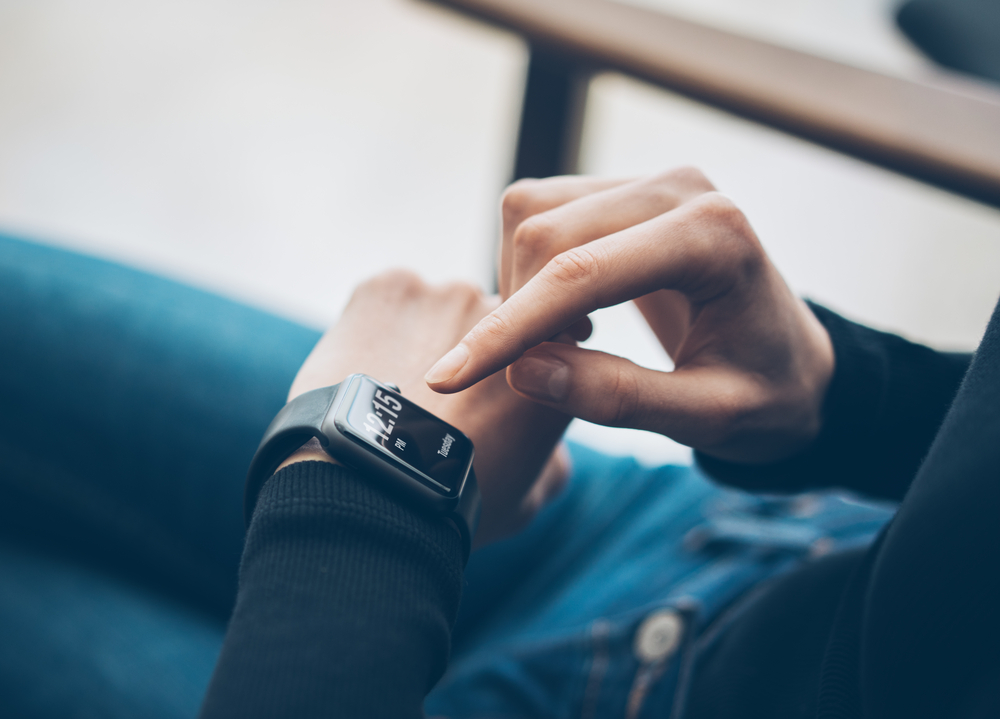Wearable Sensors Tracking Exercise Show Potential in Parkinson’s But Better Studies Needed, Team Says

Researchers at Cedars-Sinai found existing evidence does not support claims that wearable biosensors are improving outcomes for patients with various ills — from obesity to hypertension to lung or heart diseases — although hints of these devices’ potential were seen in some studies in Parkinson’s patients.
A lack of long-term and high-quality research analyzing benefits realized by the range of people using these devices, also known as remote patient monitors, may be a reason for this result, the research team noted. For instance, more than 4,300 studies were considered for this review, but less 1 percent was found to be of sufficient quality.
Among those few included in the final analysis, however, one in Parkinson’s patients looking at gait training exercises found “significantly” better improvements in patients using a biosensor than those given home visits. This six-week program used an ankle device and allowed for remote feedback.
Another six-week at-home physical therapy study, with Parkinson’s and other patients monitored by wireless sensors along the spine, likewise reported “important changes in clinical outcomes” — although “mixed results” were also found, the investigators said.
Wearable biosensors — noninvasive devices that couple data to the internet or a mobile app for self-monitoring or health assessment — have grown increasingly popular as wristbands or watches that do things like count steps or track sleep. However, overall proof that these sensors are improving patient outcomes across a range of ills, especially in regards to weight loss or lower blood pressure, is not there yet, the researchers said.
The study “Impact of remote patient monitoring on clinical outcomes: an updated meta-analysis of randomized controlled trials,” was published in npj Digital Medicine.
“As of now, we don’t have enough evidence that they consistently change clinical outcomes in a meaningful way,” Brennan Spiegel, MD, senior author of the study, said in a Cedars-Sinai release. “But that doesn’t mean they can’t.”
Wearable devices to measure health indicators are seen as a potential way to reduce healthcare burden, lower costs, generate data, and improve physician oversight. But a meta-analysis (considered a high-level analysis) revealed that remote patient monitoring showed no signs of significance in six clinical outcomes — healthy changes in body mass index, weight, waist circumference, body fat percentage, systolic blood pressure, and diastolic blood pressure.
This meta-review examined 27 studies from 13 countries, published between January 2000 and October 2016, that looked at the outcomes of patients with illnesses including cardiovascular disease, lung disease, Parkinson’s, and sleeping disorders. Devices ranged from physical activity trackers to pulse oximeters (oxygen saturation monitors) and were embedded in every available form, from watches to textiles.
The team’s analysis showed that the devices largely had no significant impact on outcomes studied, especially in the meta-analysis. Certain types of interventions worked best instead, they found, including efforts grounded in social science models and established care guidelines or personalized coaching.
“There is a big difference between using these sensors to track sleep for self-betterment and using them to make medical decisions,” said Michelle S. Keller, a study co-author.
Lack of available long-term and quality data could be a reason for these findings, the researchers emphasized. Very few studies were randomized and many varied significantly in terms of the types of devices used, populations observed, and interventions tested.
“Many of the studies we reviewed were still in the pilot phase,” said Benjamin Noah, the study’s lead author. “There just is not enough data yet.”






